External Services
Opsgenie allows users to track any public Statuspage.io page incident via external services. If you would like to receive alerts or notifications about incidents created on a public Statuspage page, you can add the page as an external service or subscribe to an existing external service.
When you add an external service, incidents created on the corresponding Statuspage will trigger an alert for the Opsgenie owner team and subscribed teams. To learn more information about team subscriptions to external services, refer here..
Managing external services
To add, view, edit, and delete an external service added by your own team, access the services tab on the team dashboard:
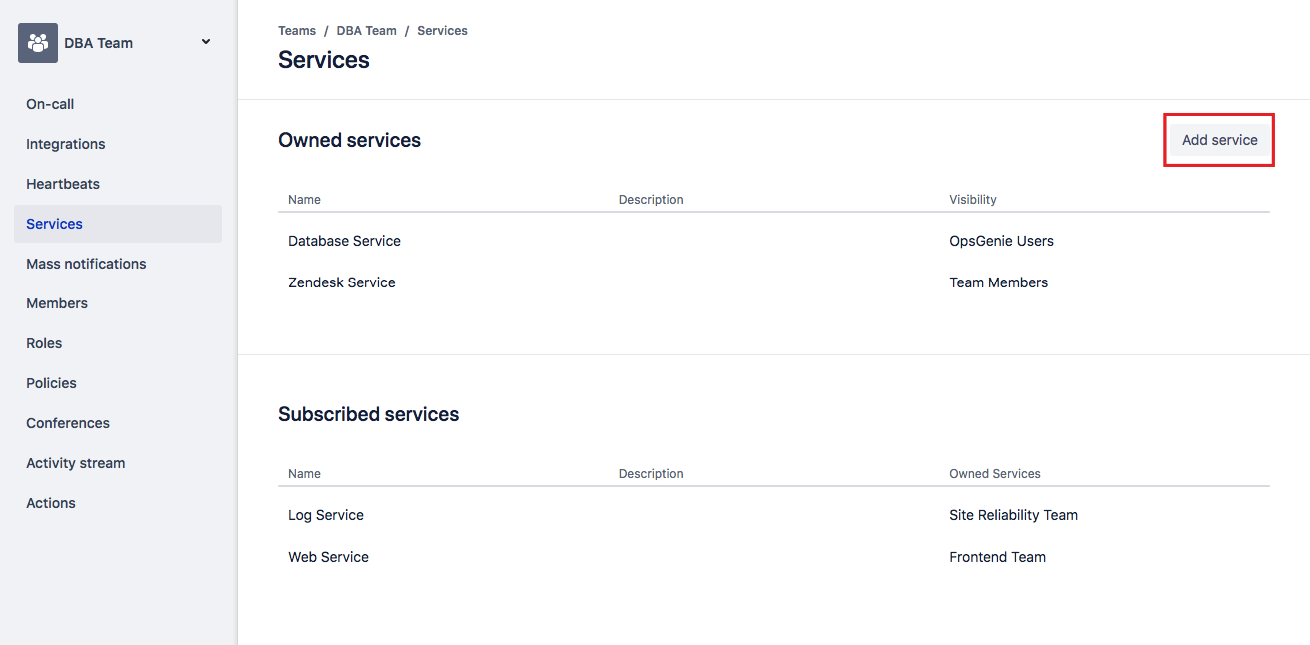
Or you can add an external service via the services page if your role allows:
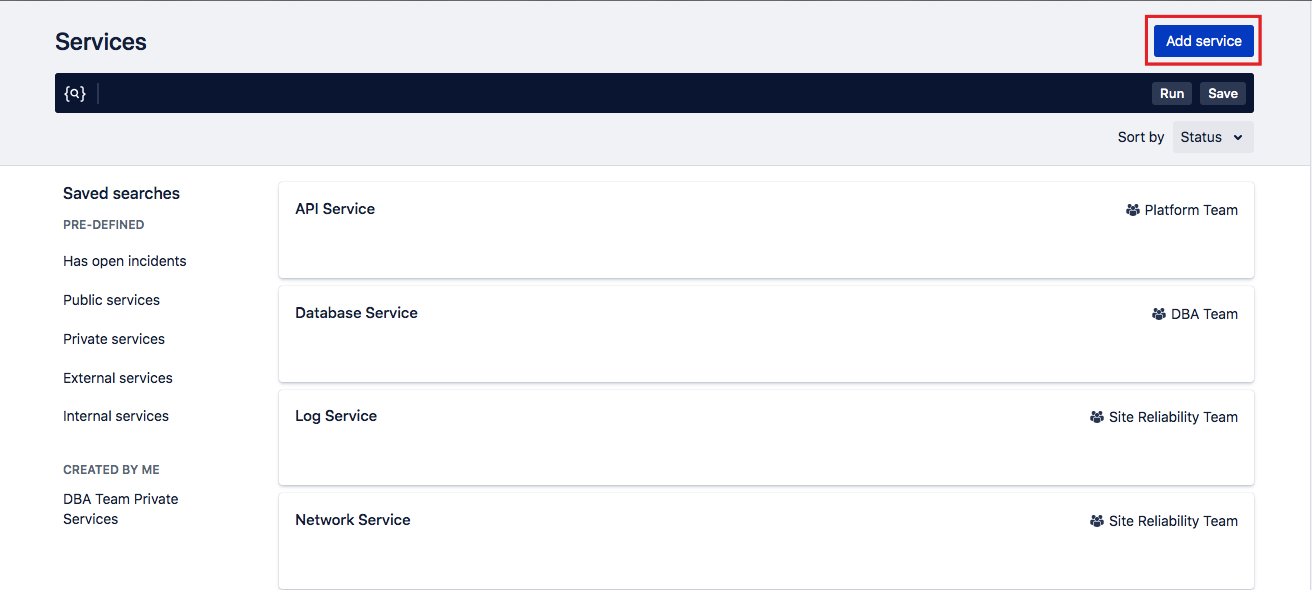
To view information about an existing external service that is owned by another team, go to services — if the team added the service as visible to the organization and if your Opsgenie user role allows):
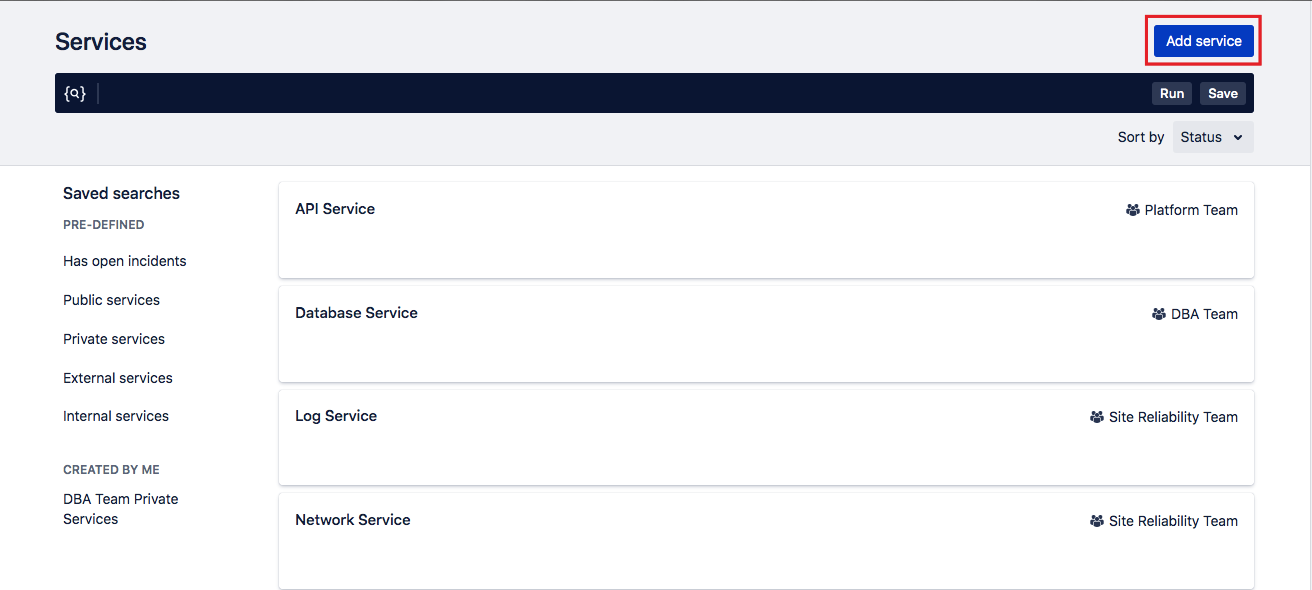
Adding and editing external services
To create an external service,
1 - Click Add service on the team dashboard via the services tab.
2 -Select External service
3 - Search for the desired Statuspage. You can filter the components for which you would like to informed about:
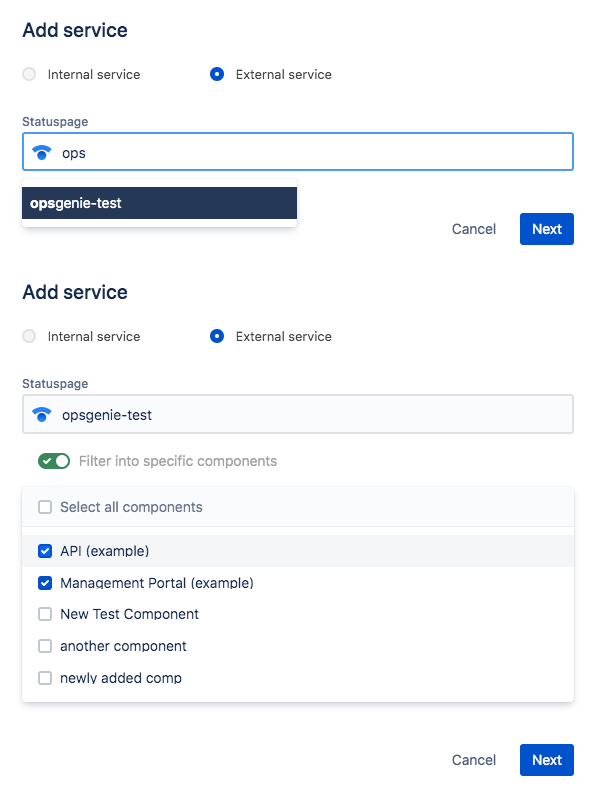
Please note that, at least three letters are required for page search.
Define an external service by entering (and saving) a service name, service description, and visibility (private to the team or visible to the organization).
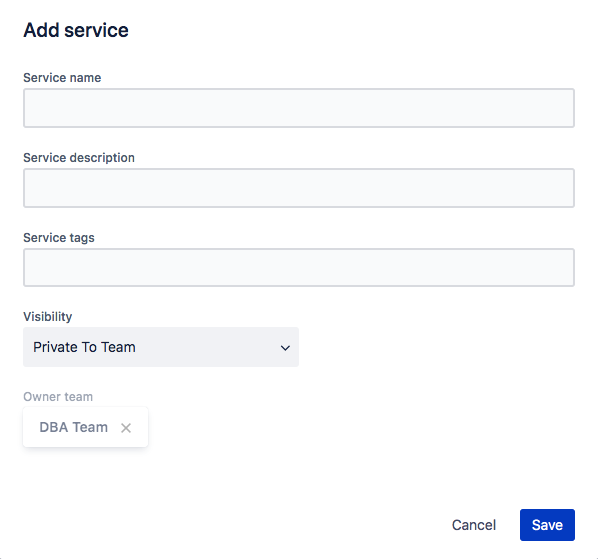
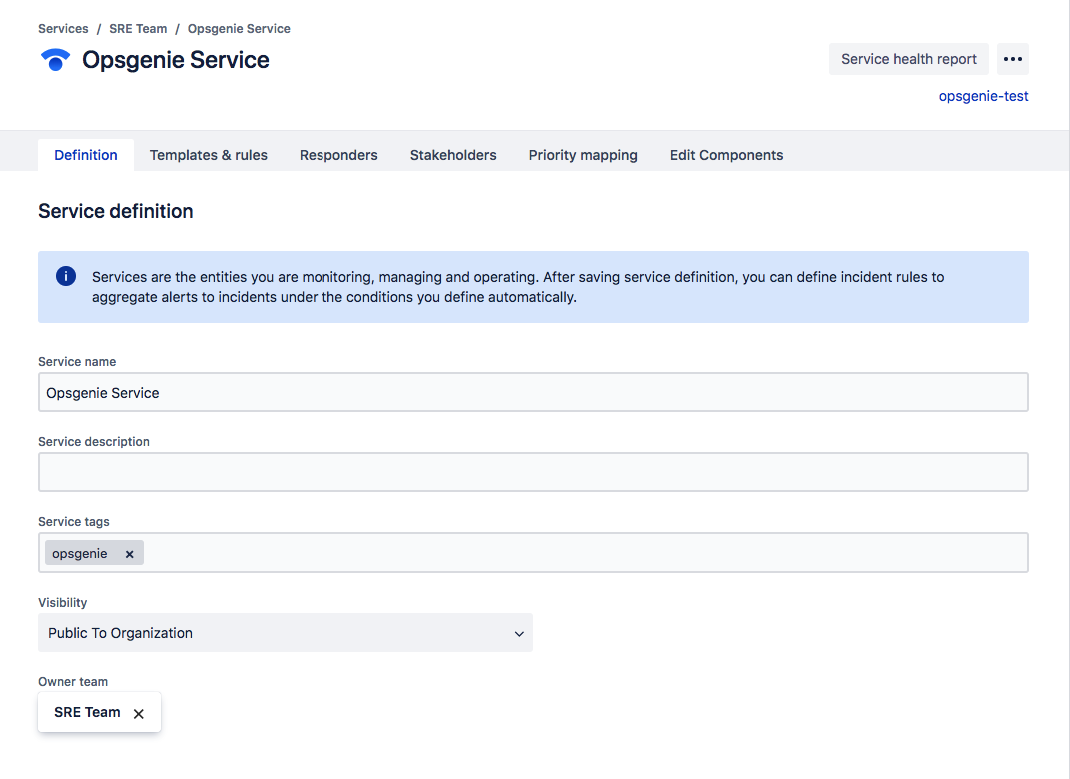
will be updated
After you have added a service to a team, add incident rules and templates for incidents and for communications with responders and stakeholders.
- Templates save time filling out forms for manually-created alerts, as well as setting up different Incident workflows and communications for varying types of scenarios involving a Service.
- Incident Rules automatically generate Incidents from Alerts based on conditions that users specify.
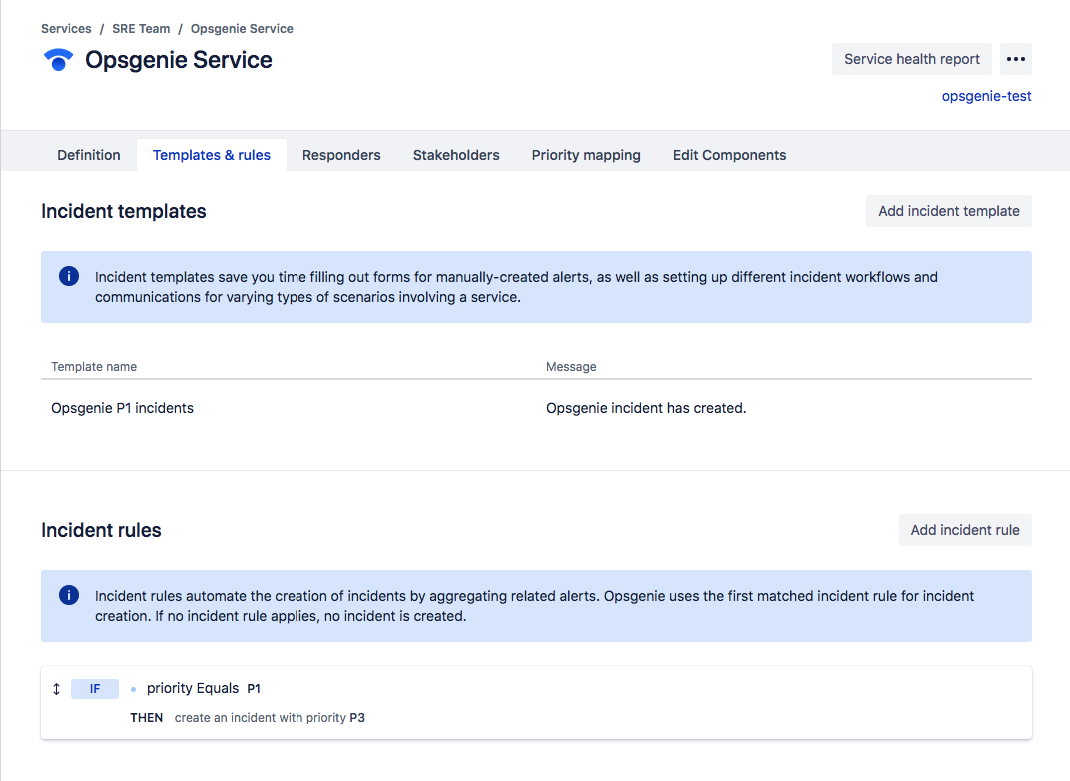
Components
Component configuration can be edited via the components tab. External service owner team and subscribed teams will be notified for incidents affect the selected components.
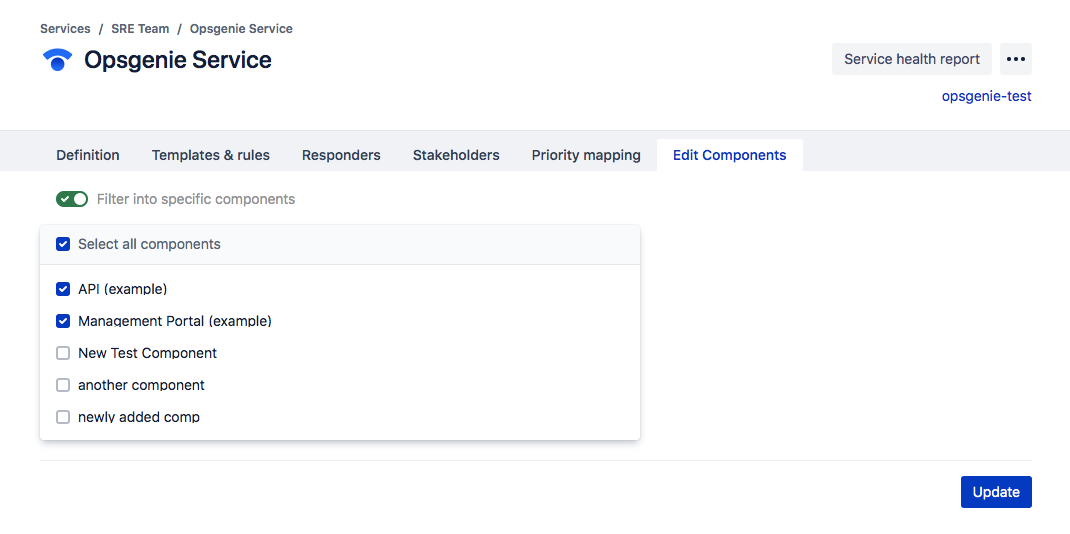
Impact mapping
Opsgenie alert priority mapping can be configured in the impact mapping tab. Subscribed teams will also receive alerts with the configured priority mapping and alert tags defined via owner team.
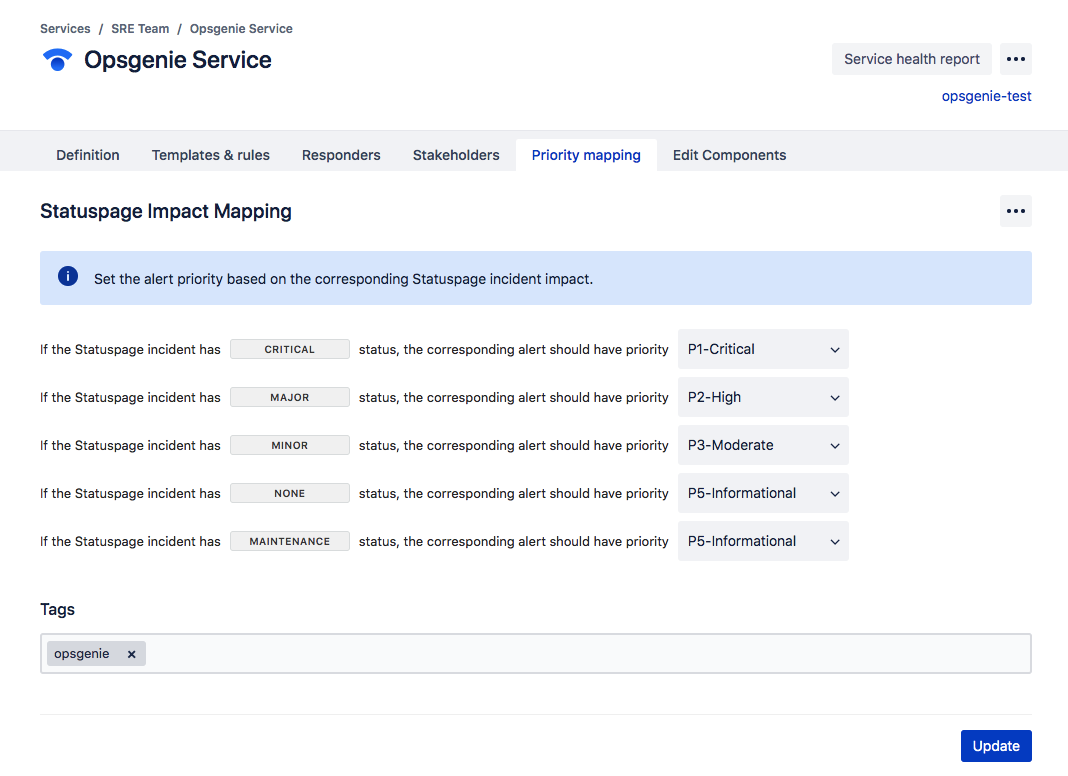
screenshot
Add templates to a service
Create and add templates to design both incidents and communications for responders and stakeholders who need to be involved with an Incident impacting a service. See Incident Template Creation .
- By default, incident rules and templates apply to the same responders and stakeholders you identify in services. You can change these responders and stakeholders when you create incidents.
Responder templates
Other teams or individuals may need to be involved in resolving an incident. You can add other Opsgenie users to a service as responders in order to notify them (by separate alert) and give them the ability to view incidents.
- Owner Teams - In the context of an incident, the team that owns an impacted service (the owner team) receives the main incident notification. It is also the only responder that can acknowledge an Alert.
- Other Teams: In the context of an incident, teams that are added to an incident as responders, receive a subalert notification (for the incident). Subalerts created for responder teams are shown under the alerts dashboard as normal alerts. Subalerts contain links to the impacted service’s service status page. They allow access to the same collaboration tools for the related Incident.
- Individuals: In the context of an incident, individual responders can be added as responders — from a list of users, admins, and owners.
When you want to provide additional experts with access to incident and alert information and permission to take actions on incidents involving a service, you can follow the directions below to add responders.
To add responders to a service
- Click the Responders tab in an open service on a team dashboard.
- Add responders:

- Add one or more teams as responders by starting to type their names under *Add team(s),** and then choosing from the list.
- Add individual Opsgenie users as responders by starting to type their names under Add responders, and then choosing from the list.
- Click Update.
Notifications are based on Opsgenie’s alert notification flow.
Stakeholder templates
Opsgenie can automatically notify stakeholders from across your organization about an incident involving a service (through a variety of communication channels). Just follow the Instructions below to add stakeholders to be notified.
To add stakeholders to be notified about an incident
- Either add individual Opsgenie users as stakeholders or configure Opsgenie rules to select types of stakeholders whose user profiles match specific conditions.
Start typing to add an individual stakeholder or choose the rule configuration for Opsgenie to use, and then click + Add new type (to begin entering conditions that Opsgenie will match against user data).
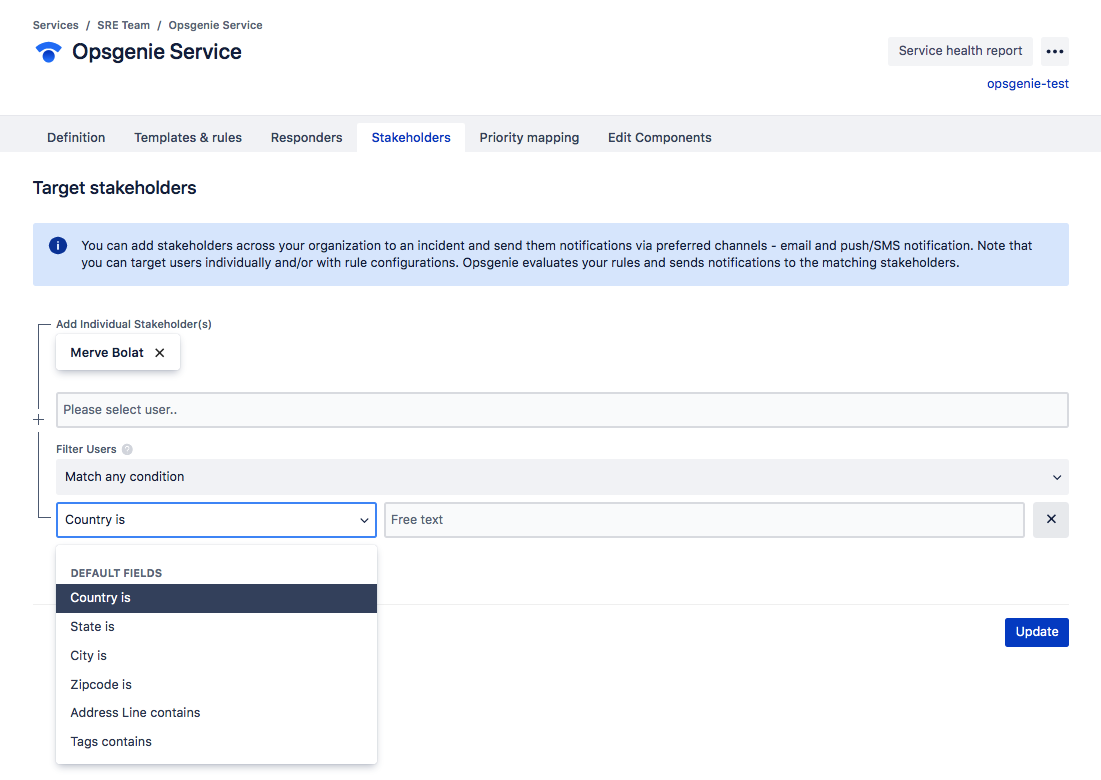
- When match all conditions is entered with multiple conditions, Opsgenie selects only users who match all the conditions.
For example: if the conditions include State is Virginia and City is Falls Church, then Opsgenie will only look for users in Falls Church, Virginia — and only send Stakeholder notifications to those users.
- Click Update.
Opsgenie notifies stakeholders according to their contact method profile settings or any overriding notifications template that the organization may have set.
Add incident rules to external services
Incident rules allow for customization for how incidents are automatically created. More than one incident rule is able to be applied to any service, and incident rules can contain multiple conditions.
When you create an incident rule, set the conditions that filter incoming alert*data from integrated sources — and create an incident if incoming alert data matches the conditions that are set:
- Match all alerts:
Opsgenie creates an Incident when it receives incoming alerts from any source. - Match one or more conditions below:
Opsgenie creates an Incident if incoming alert data matches any condition specified. - Match all conditions below:
Opsgenie creates an Incident only if incoming alert data matches all the conditions specified. If any of them fail, Opsgenie doesn't perform the action.
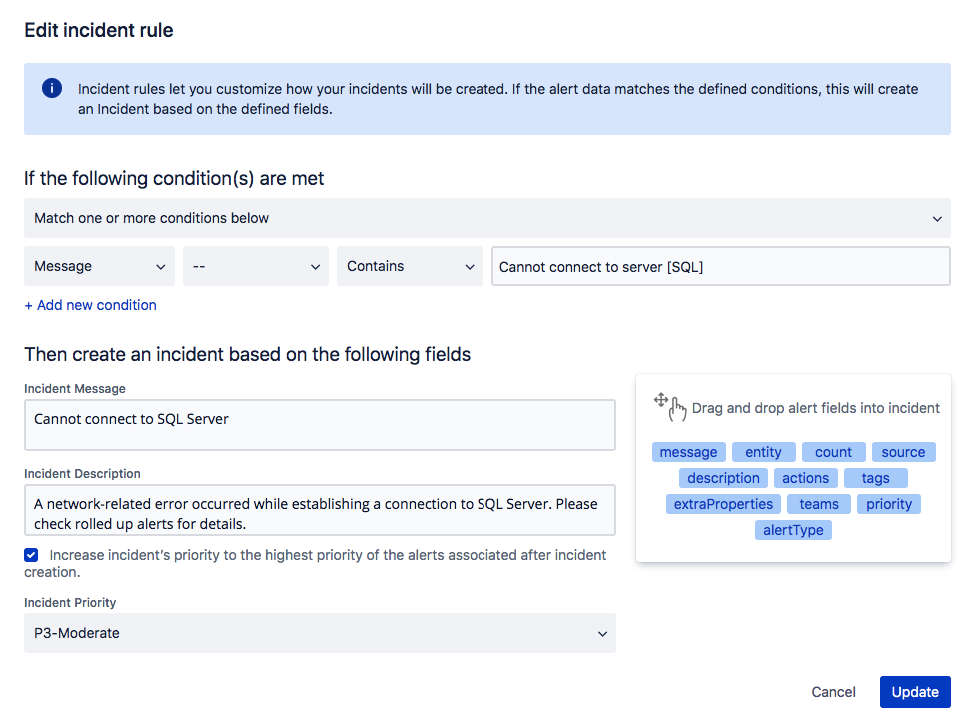
- To add and configure incident rules, click Add incident rule.

- Enter information in the fields, just as an alert rule is created.
When conditions are specified:
1. Select a field to examine.
2. Select a condition, such as equals or contains.
3. Enter any value to compare with alert information.

Updated 7 months ago
